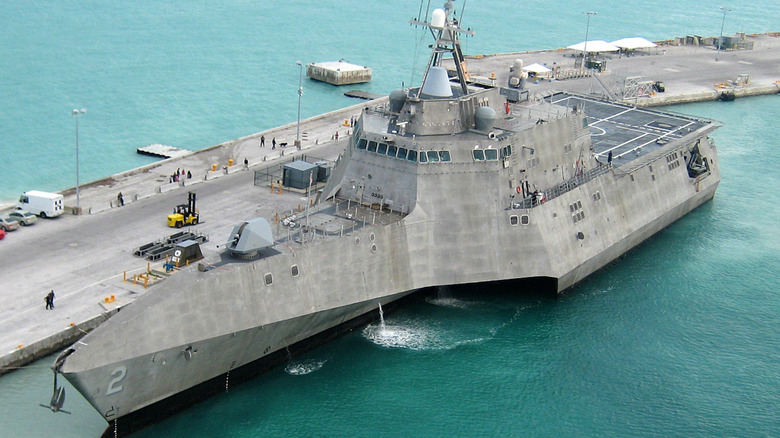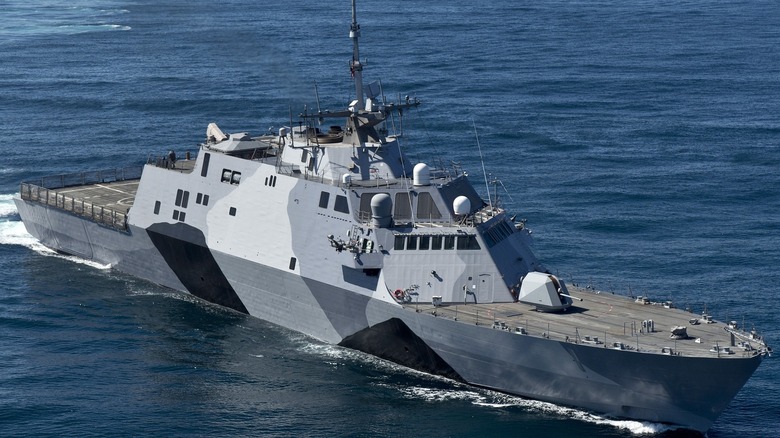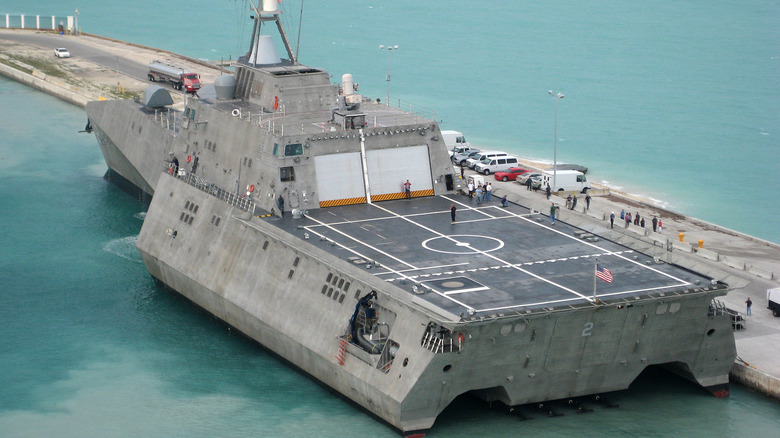What's The Controversy With The Littoral Combat Ship? A Brief Look At Its Complicated History
The Littoral Combat Ship was supposed to be the Navy's next big breakthrough — a lightweight, fast, and flexible vessel designed to operate close to shorelines, where larger warships struggled. But nearly two decades in, the program has become one of the most controversial chapters in Navy history. Why? Because it ran over budget, underperformed in combat roles, and many ships were decommissioned long before their expected lifespan.
The Undersecretary of the Navy, Robert Work, described the ship as the "Swiss Army Knife" of the fleet — a platform meant to be quickly adapted for different missions like surface warfare, mine clearance, and anti-submarine operations. But the Navy ended up building two completely different types: the Freedom-class and the Independence-class. That added the requirement for separate crews, parts, and training pipelines. Worse, both designs were based on commercial ferry hulls with little armor, relying on the idea that crews would evacuate if under attack — a risky tradeoff in any combat zone.
There were big promises, but the ship didn't deliver
One of the Littoral Combat Ship's most ambitious features was its modular mission package system. Instead of building separate ships for different roles, the Navy envisioned a single vessel that could be reconfigured for surface warfare, anti-submarine operations, and mine hunting. Each package included a mix of specialized equipment, sensors, and even unmanned systems tailored to its mission. But this flexibility proved more theoretical than practical. For instance, the minehunting package faced reliability issues and broke down easily, while the anti-submarine package struggled with hardware integration and poor acoustic performance. Over time, both were shelved, leaving only the surface warfare package in use.
What made things worse was that the ships were built to run with smaller crews, which meant they needed to be highly automated. But instead of having simple tools to fix problems, many systems were complex and locked behind special software that only private contractors could access. So when something broke, the crew couldn't fix it on their own, and they had to wait for help. On top of that, the Freedom-class ships had repeated engine problems, especially with a part called the combining gear, which connects different engines to the propeller system. These breakdowns were expensive to fix. Things got so bad that the Navy had to pull the entire LCS fleet back in 2016 for retraining after multiple failures and confusion over how to operate the ships properly.
It was a costly lesson for the Navy
Despite all this, the Navy didn't walk away. It scaled back the program, made upgrades, and started addressing the flaws. As a result, new missiles were added, and even drones were introduced. Ships like the USS Charleston managed to complete record-breaking deployments, showing that there was still potential. The Navy created a dedicated Task Force to focus on improving the ships' reliability.
Some of the Independence-class ships now operate at 96% efficiency, and as of January 2025, Freedom-class ships have begun receiving new weapon systems, with more upgrades on the way. Recent additions include counter-drone capabilities using Longbow Hellfire missiles, while future upgrades are expected to bring Naval Strike Missiles and Mk 70 launchers capable of firing SM-6 and Tomahawk cruise missiles. So, the Littoral Combat Ships started as a bold idea, which then ran into a wall of reality. That said, the story isn't over. The Navy seems determined to make the most of these ships, learning from the past and trying to build something better moving forward.


